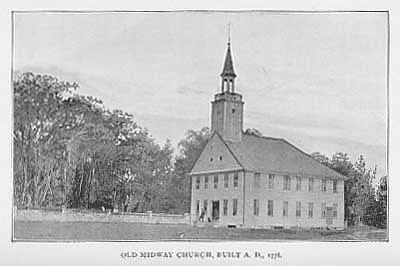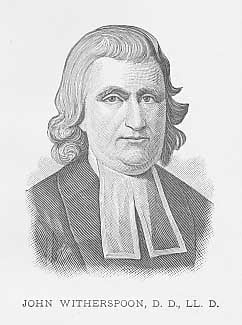The Christian patriot
We don’t know much about him other than broad general facts, but the Rev. Moses Allen deserves to have a record of remembrance written up in the annals of the history of our great nation and the Presbyterian church. He was born in Northampton, Massachusetts on September 14, 1748. Nothing is known about his family or early life. We are told that he was educated at the College of New Jersey (which later became Princeton University), graduating in 1772. He was then licensed to preach by the Presbytery of New Brunswick on February 1, 1774 and later ordained to the gospel ministry on March 10, 1774. The celebrated New Side minister William Tennent took part in that ordination, which took place in Savannah, Georgia.
A group of fifty-two Congregationalists from New England had settled in South Carolina, landing at Seawee Bay seventy-five years earlier in the history of the southern colony. They soon planted an independent church at Wappetaw. While the church was Congregationalist in spirit, it was in reality a Presbyterian church in doctrine. In fact, more Presbyterian ministers were pastors there than Congregationalist pastors. To this congregation, young twenty-six year old Moses Allen was installed as its pastor.
 To everyone’s surprise, his fast courtship of a young fifteen year old girl, and subsequent marriage of her, took place at this congregation. Her name was Elizabeth Odingsell, who is described as a “ward” of a Revolutionary general from Georgia. Then just three years later, he went to Midway Church in Georgia. It was there that he joined the Georgia Brigade of Patriots, to fight on the side of George Washington in that battle of independence from England.
To everyone’s surprise, his fast courtship of a young fifteen year old girl, and subsequent marriage of her, took place at this congregation. Her name was Elizabeth Odingsell, who is described as a “ward” of a Revolutionary general from Georgia. Then just three years later, he went to Midway Church in Georgia. It was there that he joined the Georgia Brigade of Patriots, to fight on the side of George Washington in that battle of independence from England.
» The old Midway Church, which was built in 1778. Rev. Allen would thus have been the pastor who oversaw the construction of old Midway, and he would have been able to preach there some number of times before his decease. »
It wasn’t safe to be a Presbyterian, and for that matter a Presbyterian pastor during the time of the Revolution. Churches were subject to being burned down. Congregations were subject to dispersal. And the Midway Church was one such church and congregation which was to suffer from British occupation of the colony. Allen, by this time, had left the pulpit to be a chaplain in the Georgia Brigade. Captured by the British, he was placed in the hold of a prison ship in the Charleston harbor. Just five years into his marriage with his young bride, he attempt to escape from captivity, by jumping overboard and swimming to the shore along with two French prisoners-of-war. Twenty yards from the shore, he was afflicted with a cramp, and drowned, on this day of February 8, 1779. His young bride was twenty years of age when he died.
It was said by way of testimony that he was faithful in exhortation and in field service with the troops of Georgia. Certainly, he faithfully ministered the Word of God in the two congregations which he served in South Carolina and Georgia.
Words to Live By: This Presbyterian pastor is little known in Reformed circles today, but well-known to the annals of heaven. He took the Word of grace to civilians and soldiers alike, uncaring about his safety, for he was in the hands of God. We can go in life and calling with the same assurance that he possessed, knowing that our times are in His hands.


